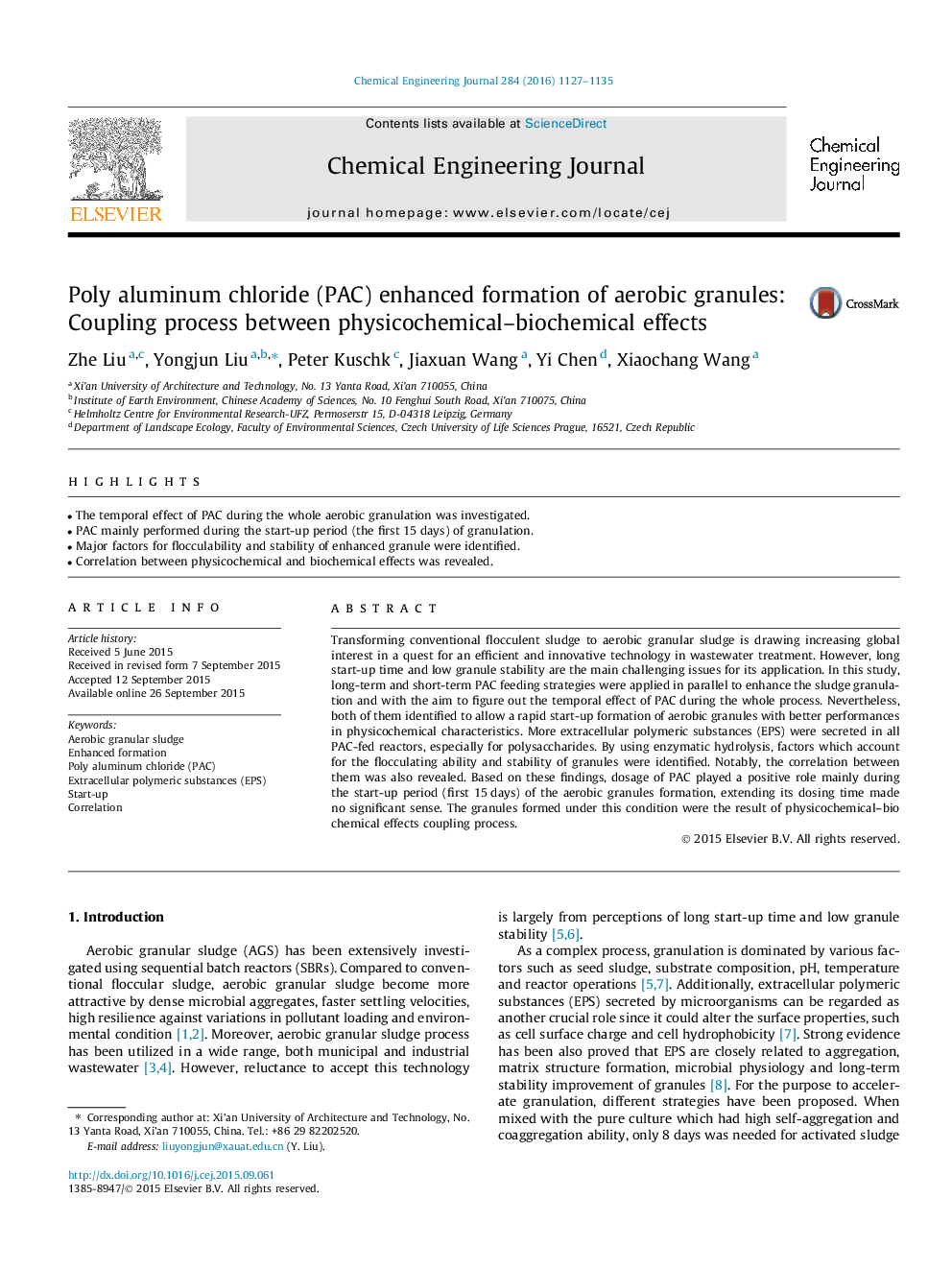| Article ID | Journal | Published Year | Pages | File Type |
|---|---|---|---|---|
| 146021 | Chemical Engineering Journal | 2016 | 9 Pages |
•The temporal effect of PAC during the whole aerobic granulation was investigated.•PAC mainly performed during the start-up period (the first 15 days) of granulation.•Major factors for flocculability and stability of enhanced granule were identified.•Correlation between physicochemical and biochemical effects was revealed.
Transforming conventional flocculent sludge to aerobic granular sludge is drawing increasing global interest in a quest for an efficient and innovative technology in wastewater treatment. However, long start-up time and low granule stability are the main challenging issues for its application. In this study, long-term and short-term PAC feeding strategies were applied in parallel to enhance the sludge granulation and with the aim to figure out the temporal effect of PAC during the whole process. Nevertheless, both of them identified to allow a rapid start-up formation of aerobic granules with better performances in physicochemical characteristics. More extracellular polymeric substances (EPS) were secreted in all PAC-fed reactors, especially for polysaccharides. By using enzymatic hydrolysis, factors which account for the flocculating ability and stability of granules were identified. Notably, the correlation between them was also revealed. Based on these findings, dosage of PAC played a positive role mainly during the start-up period (first 15 days) of the aerobic granules formation, extending its dosing time made no significant sense. The granules formed under this condition were the result of physicochemical–biochemical effects coupling process.
